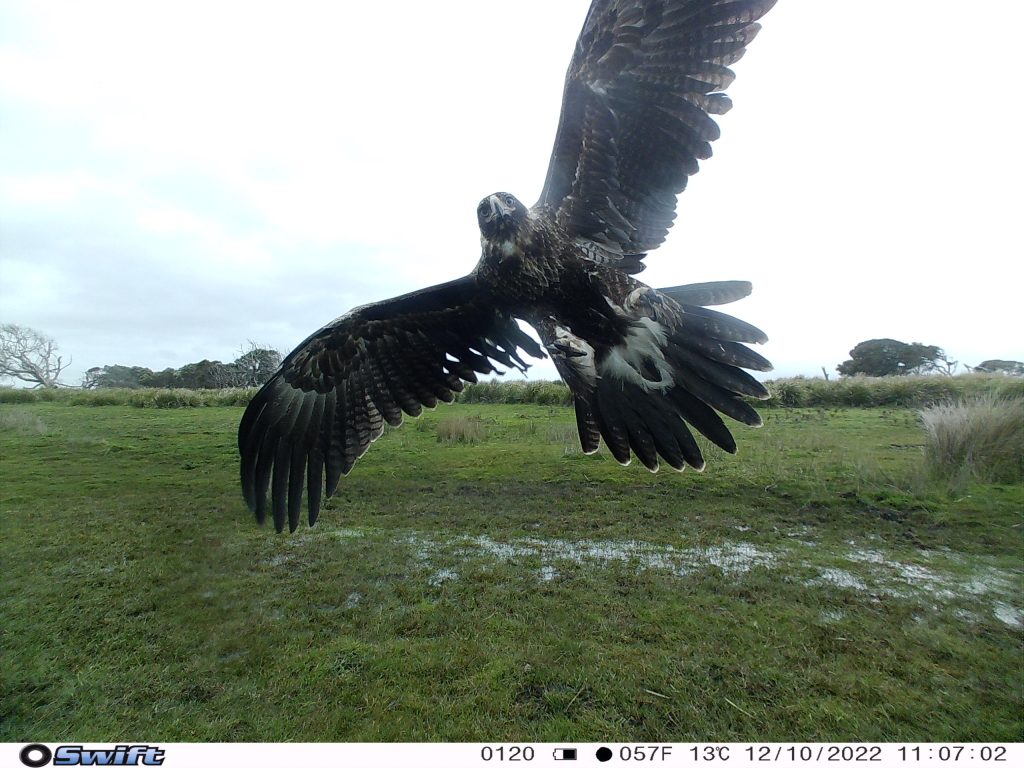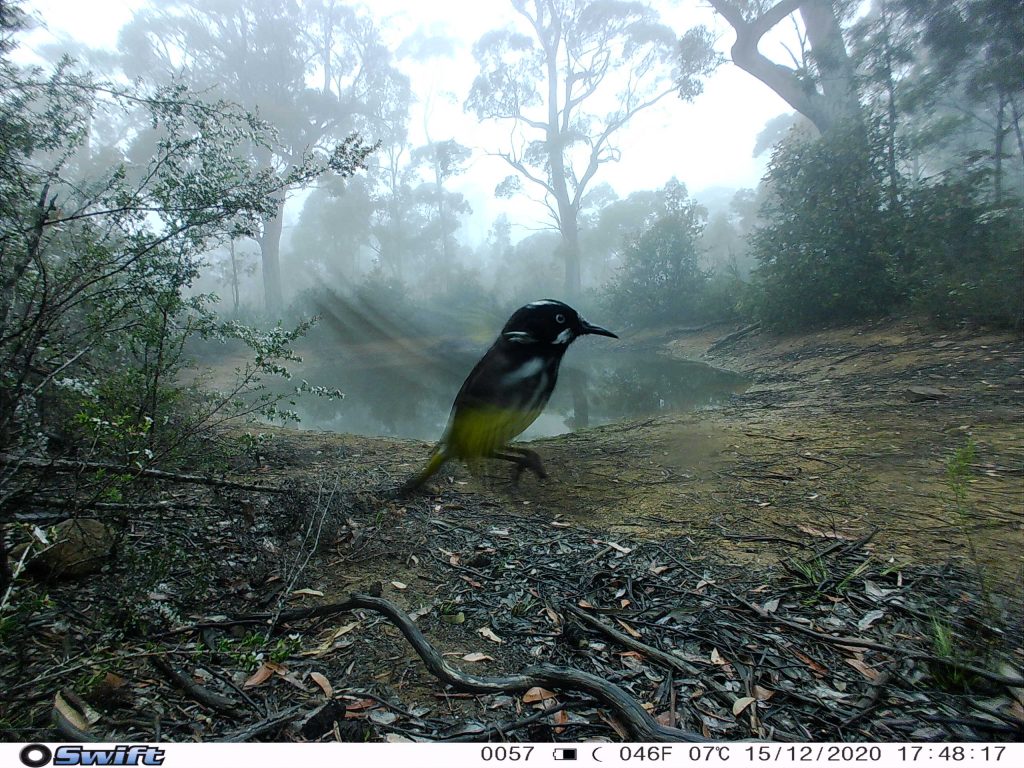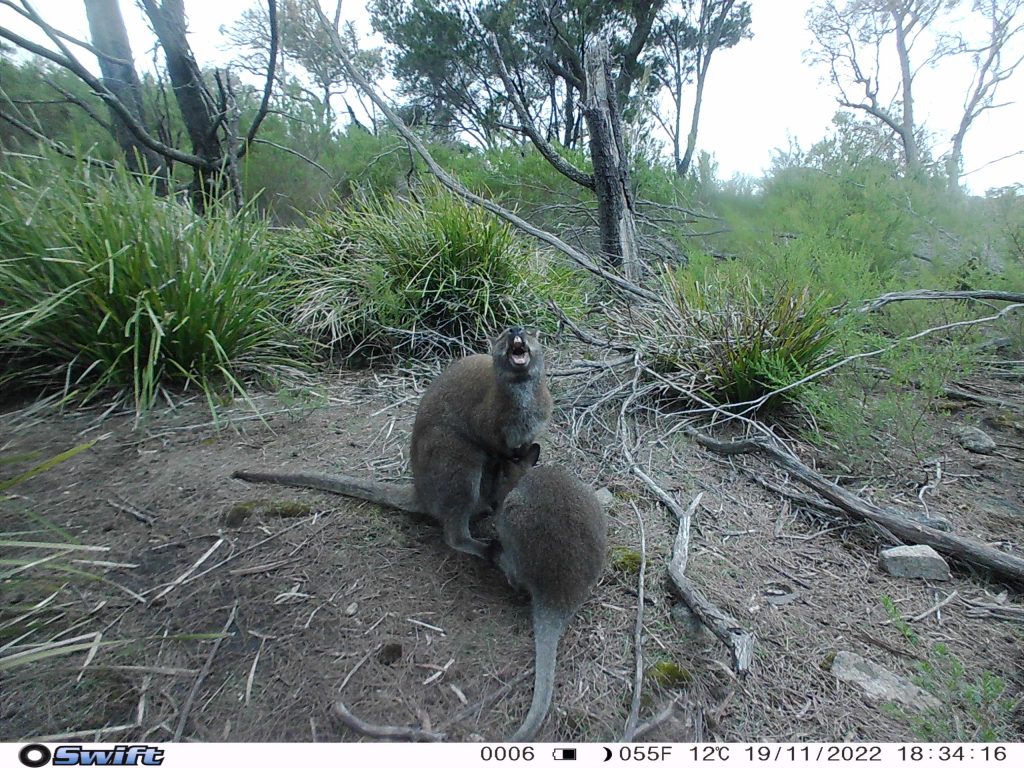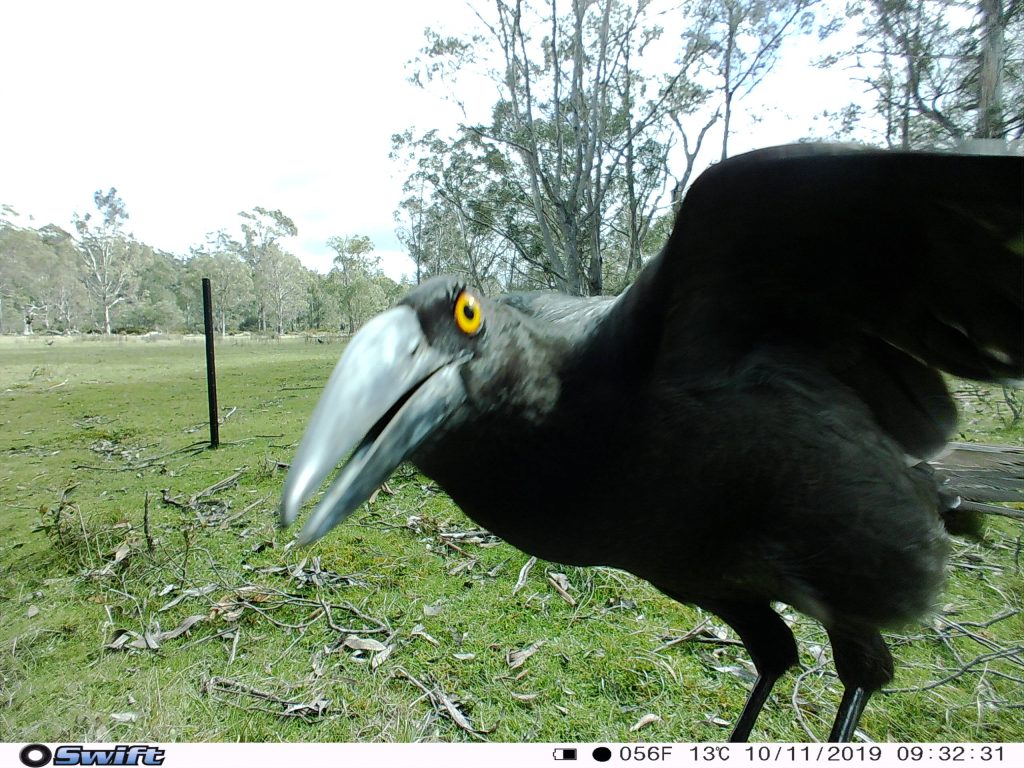
Currawong culprits
When collecting camera traps from my PhD experiment, I could not find the front half of one camera. Luckily, after a few minutes searching, and blaming a possum for the vandalism, I found it. Looking through the images later, I could see a flock of currawongs hanging around. One cheeky bird managed to detach the front of the camera!
Tom Guy – UTAS
Black currawong (Strepera fuliginosa)
Currawongs exemplify avian intelligence. Despite their resemblance to corvids, which are more renowned for their smarts, currawongs belong to the Artamidae family, alongside magpies and butcherbirds. Curra’s engage in “solo play”, rolling on their backs while playing with food, and play-fighting with their peers.
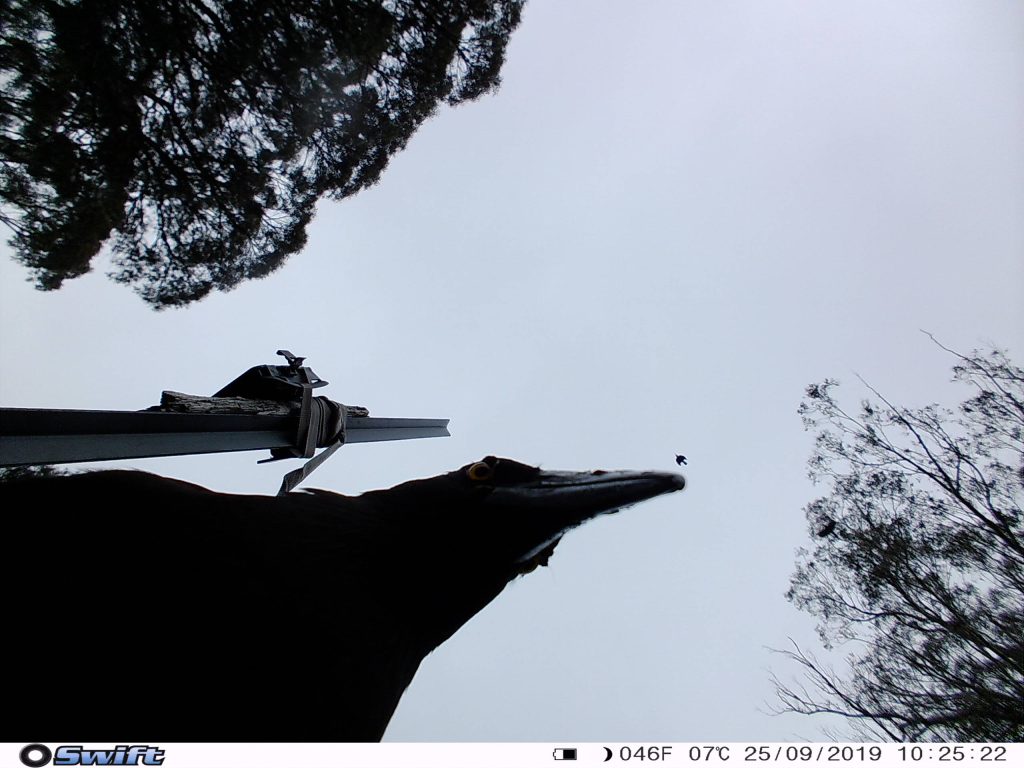
They sometimes cache food, demonstrating an impressive memory, are long-lived, with the oldest known individual at least 12 years, and exhibit partial altitudinal migration — all traits linked to higher cognitive function! Their adaptation to human activity further hints at a big bird brain. Black currawongs are known to raid unsupervised backpacks on the Overland Track, deftly undoing zips in search of snacks. And as the primary nest predators of small birds in Tasmania, it is perhaps unsurprising that their sharp vision and curiosity make them more likely to investigate novel objects in their environment, including Tom’s camera trap.
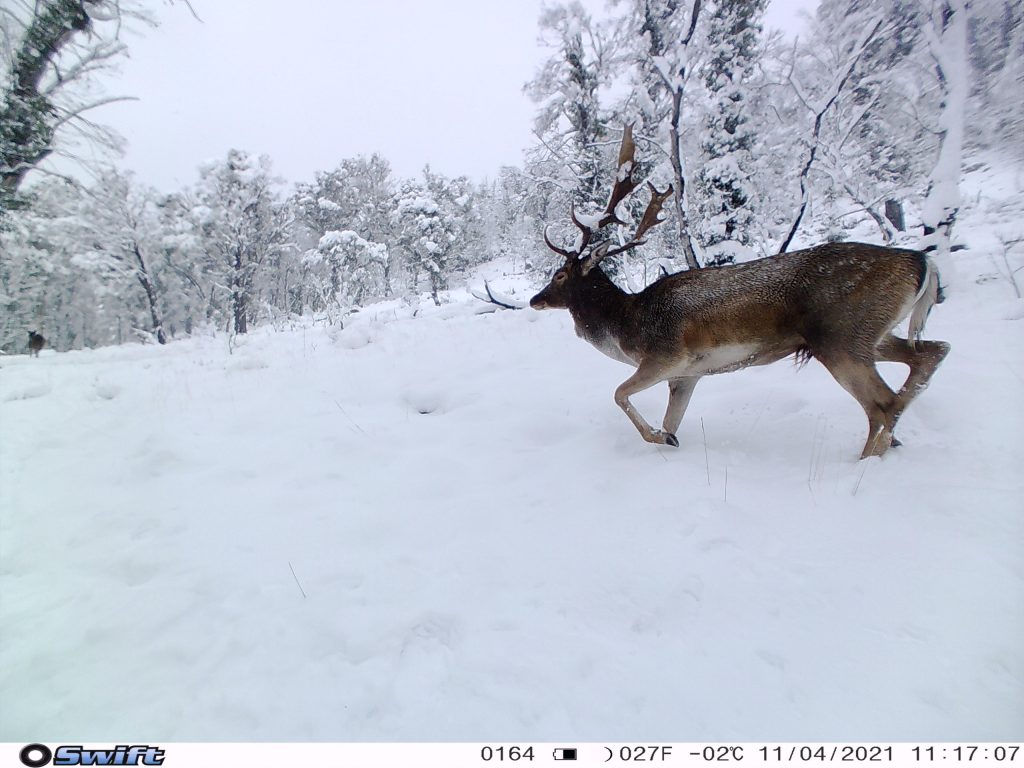
Reindeer?
This image was one among millions taken as part of a feral deer census at 13 locations across Tasmania and its offshore islands. Game Services have 200 remote cameras but citizen science is increasingly making an important contribution to the management of Fallow Deer populations. Launched in November 2016, the DeerScan App provides the opportunity for the general public to provide information on the distribution and abundance of deer, by submitting observations on the location, herd size, gender and age of deer.
Game Services Tasmania (NRE)
Fallow deer (Dama dama)
Six species of deer were introduced to Australia by acclimatisation societies in the early 19th century. The only species to have survived in Tasmania is the fallow deer, which continues to expand its range both on its own but also via escapes and intentional release. The fallow deer population is growing at an alarming rate, and without change in management, is expected to reach one million by 2050. Deer pose a threat to both conservation and agriculture in Tasmania. Like other ungulates (hoofed animals), deer can significantly impact plant communities through heavy grazing, browsing and trampling. Male deer ringbark trees and snap young saplings in the process of rubbing the velvet from their antlers and marking their territories. Changes in vegetation cover and diversity caused by
fallow deer have been shown to reduce habitat quality for other animals, like birds, in other places that they have been introduced. Deer damage has been a major challenge for ecological restoration efforts in Tasmania.
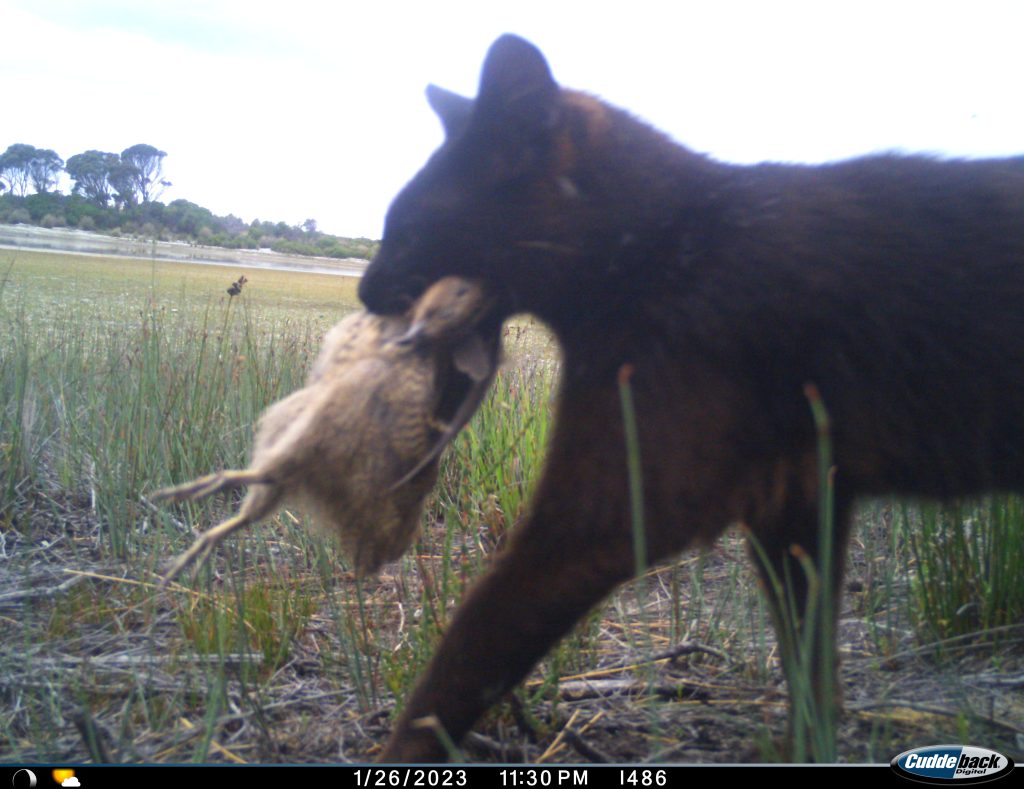
Takeaway
On beautiful Lungtalanana / Clarke Island, the resident feral cats feast on quails and other birds, year-round. This one is probably taking a meal to her kittens.
Tasmanian Aboriginal Centre
Feral cat (Felis catus)
Every year, cats in Australia are estimated to consume:
- 649 million reptiles (258 species)
- 459 million native terrestrial mammals (151 species)
- 377 million birds (339 species)
- 1086 million invertebrates
- 93 million frogs (at least 30 species)
Disease transmission from cats to Australians is estimated to cost $6 billlion every year in lost productivity and medical costs. Cat-borne disease like toxoplasmosis costs the Australian livestock industry an estimated $12 million annually. Keep your cats indoors, folks!
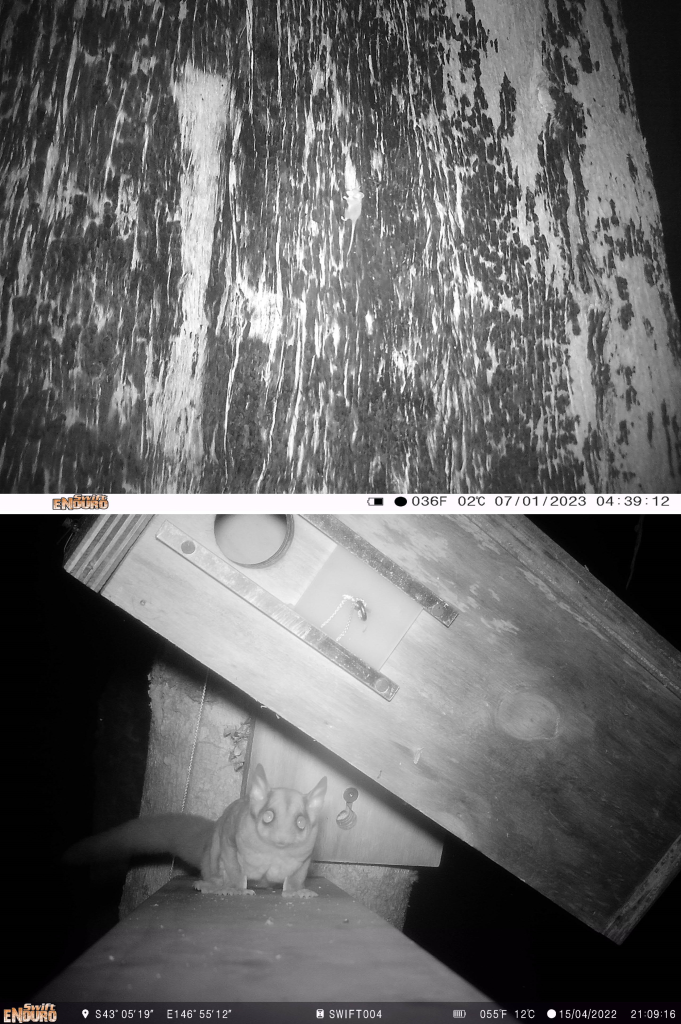
Native and Newcomer
Pygmy possum (Cercartetus sp.) and sugar glider (Petaurus breviceps)
While monitoring for sugar gliders in the southern forests we came across a number of unexpected critters attracted to the fish oil bait. Including this tiny pygmy possum who made a number of passes at high speed up and down the tree. Finally it paused long enough to have it’s portrait taken. Can you spot it? These camera’s were installed by NRM South to monitor sugar gliders in known swift parrot breeding sites. Don’t let their cute, fuzzy faces fool you. Sugar gliders, though native to mainland Australia, have become an invasive species in Tasmania. They pose a significant threat to the critically endangered swift parrot. Sugar gliders prey on swift parrots by raiding their nests, consuming eggs, and attacking adult birds. NRM South has been trialling control of sugar gliders to protect swift parrots, including at TLC’s Flat Rock Reserve.
NRM South
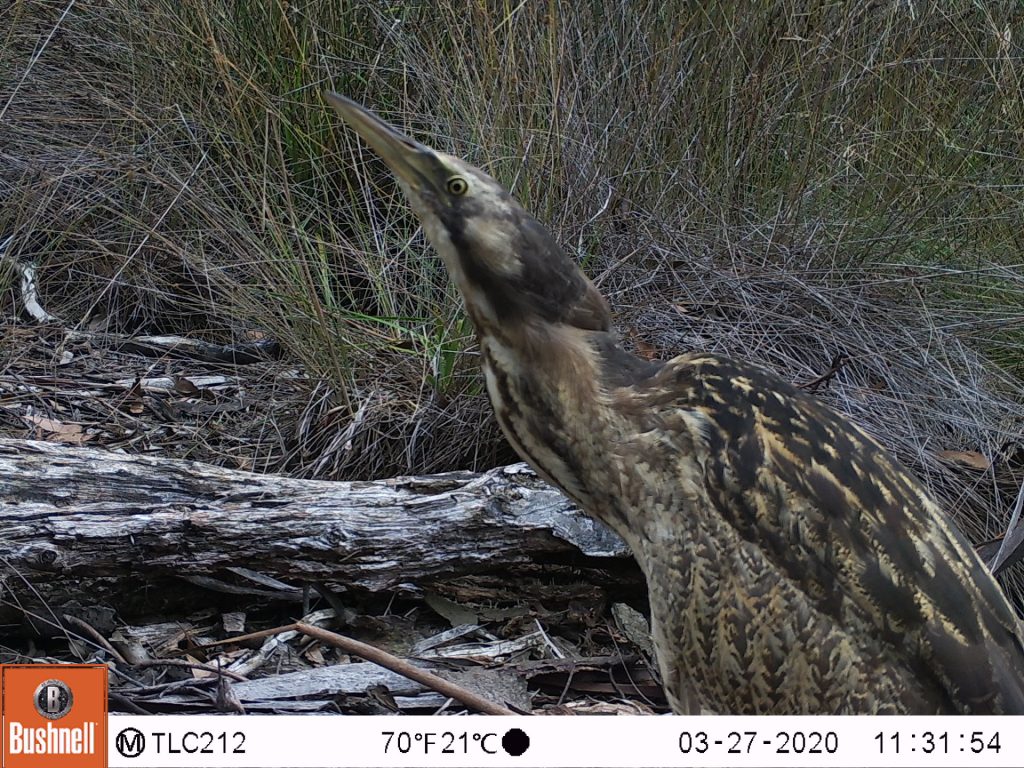
The original boomer
Australasian bittern (Botaurus poiciloptilus)
Bitterns are listed as Endangered in Australia, with only an estimated 1,300 individuals remaining. Despite their size (males weigh up to 1.3kg), they are very elusive birds. They prefer wetlands, and occassionally estuarine habitats, dominated by sedges, rush, and reeds. This photo was taken at the TLC’s Egg Islands Reserve in the Huon Valley.
Tasmanian Land Conservancy
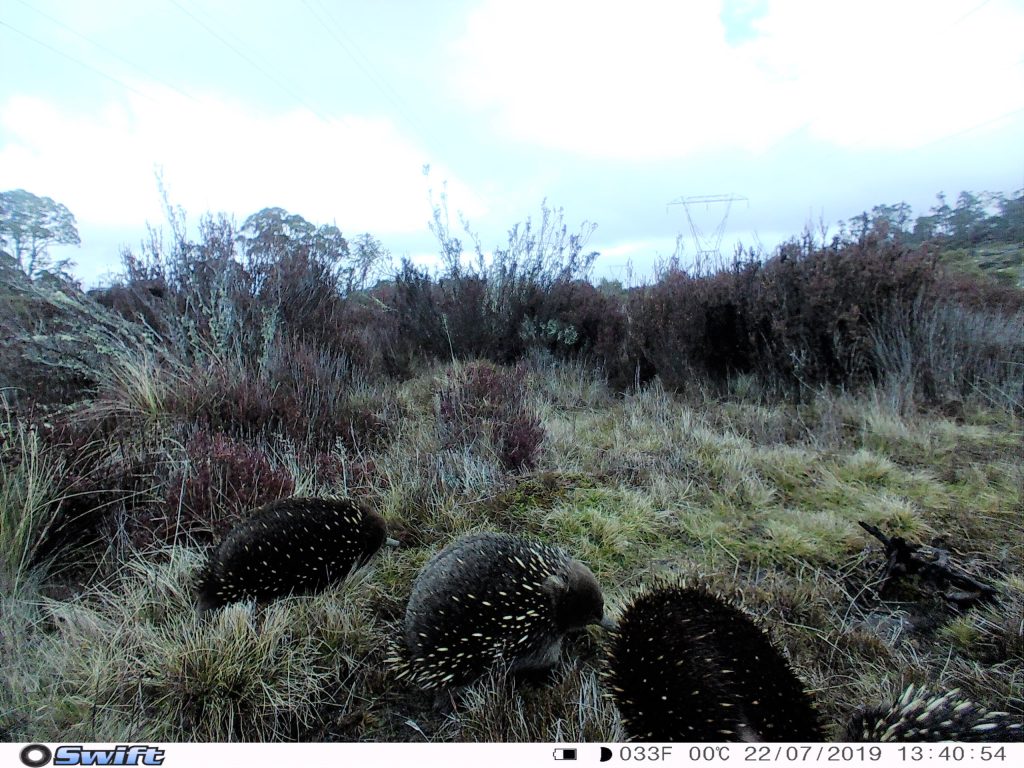
All aboard the echidna train
Short-beaked echidna (Tachyglossus aculeatus)
Active night or day, echidnas are usually solitary animals. However, when it comes to the breeding season (June – Sept), echidna trains may form, with up to 11 males (usually three or four) pursuing a female for weeks nose-to-tail until she is ready to mate. In Tassie, some males seek out females before they have even “woken” from hibernation.
Department of Natural Resources Tasmania
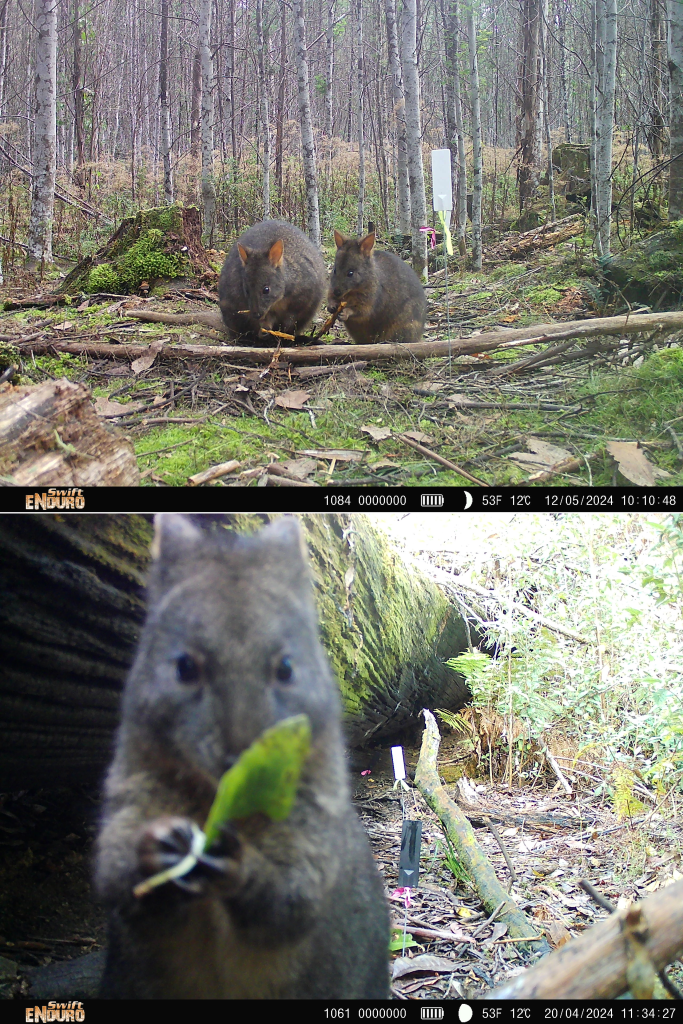
The simple joys of being a pademelon
These images show a wonderful aspect of the intimate behaviour of animals you get to see on a camera trap. I love seeing the caring nature of pademelons and their joeys, the sharing of a piece of wood, and what seems to be the simple joy of a nice leaf. I think people see pademelons so often (both alive and dead sadly) that they start to become boring. However, on camera, they appear to have such rich lives! These images were taken as part of my PhD research ‘Mammal responses to forestry and wildfire’ in managed wet eucalypt forests.
Janneke Scheeres – UTAS

